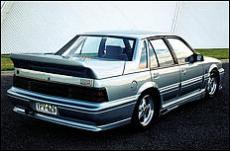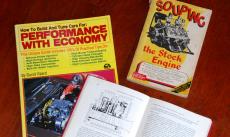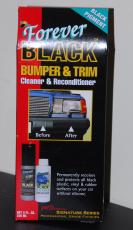Sourcing Information
Over the years I’ve spent a lot of time in TAFE libraries (for those not living in Australia, technical college libraries). In addition to the very valuable automotive books, it’s the engineering papers that are the most interesting.
Each year the Society of Automotive Engineers publishes numerous technical papers on all topics automotive. You can buy them as downloadable pdfs by going to www.sae.org – but because you can see only a précis of the paper before you need to get out your credit card, this can be an expensive way of acquiring information. However, technical college libraries often have some of the papers, especially in the book form that the SAE occasionally publishes.
The ability to keep on the cutting edge of change is one clear advantage of the SAE engineering papers, but there’s another major advantage that’s often overlooked. And what’s this other advantage? If you own an older car, it’s possible by consulting the papers of that era to find stuff that’s directly relevant to your machine.
 In 1990, when I owned a VL Holden Commodore Turbo, I was frustrated by its lack of aerodynamic development. The standard car was lousy and there were no simple off-the-shelf improvements available. The HDT Brock Commodores had body kits developed with no scientific input, and the pictured groundbreaking ‘Walkinshaw’ Group A, the first HSV model and one shaped with a huge amount of wind tunnel work, was too expensive to buy. (And it didn’t have the turbo engine.) And because the Walky was a near new car, you also couldn’t buy copies of its body kit.
In 1990, when I owned a VL Holden Commodore Turbo, I was frustrated by its lack of aerodynamic development. The standard car was lousy and there were no simple off-the-shelf improvements available. The HDT Brock Commodores had body kits developed with no scientific input, and the pictured groundbreaking ‘Walkinshaw’ Group A, the first HSV model and one shaped with a huge amount of wind tunnel work, was too expensive to buy. (And it didn’t have the turbo engine.) And because the Walky was a near new car, you also couldn’t buy copies of its body kit.
- » Continue reading or Comments (1)

 Julian Edgar, 50, has been writing about car modification and automotive technology for nearly 25 years. He has owned cars with two, three, four, five, six and eight cylinders; single turbo, twin turbo, supercharged, diesel and hybrid electric drivelines. He lists his transport interests as turbocharging, aerodynamics, suspension design and human-powered vehicles.
Julian Edgar, 50, has been writing about car modification and automotive technology for nearly 25 years. He has owned cars with two, three, four, five, six and eight cylinders; single turbo, twin turbo, supercharged, diesel and hybrid electric drivelines. He lists his transport interests as turbocharging, aerodynamics, suspension design and human-powered vehicles.


 As I have often written here, I love buying (and reading too, of course!) car books. I have a very extensive library of automotive books, including many technical examples dating back up to ninety years.
As I have often written here, I love buying (and reading too, of course!) car books. I have a very extensive library of automotive books, including many technical examples dating back up to ninety years. 




